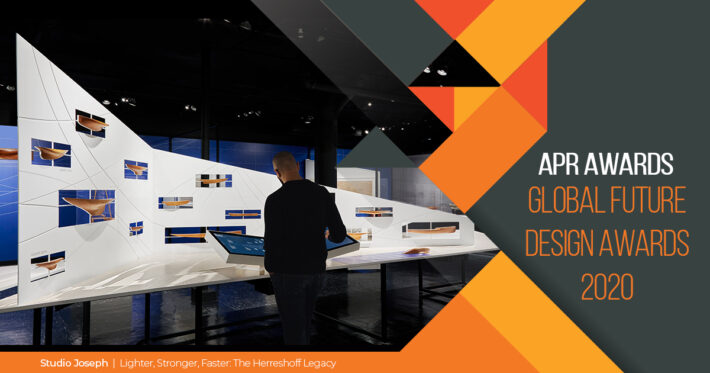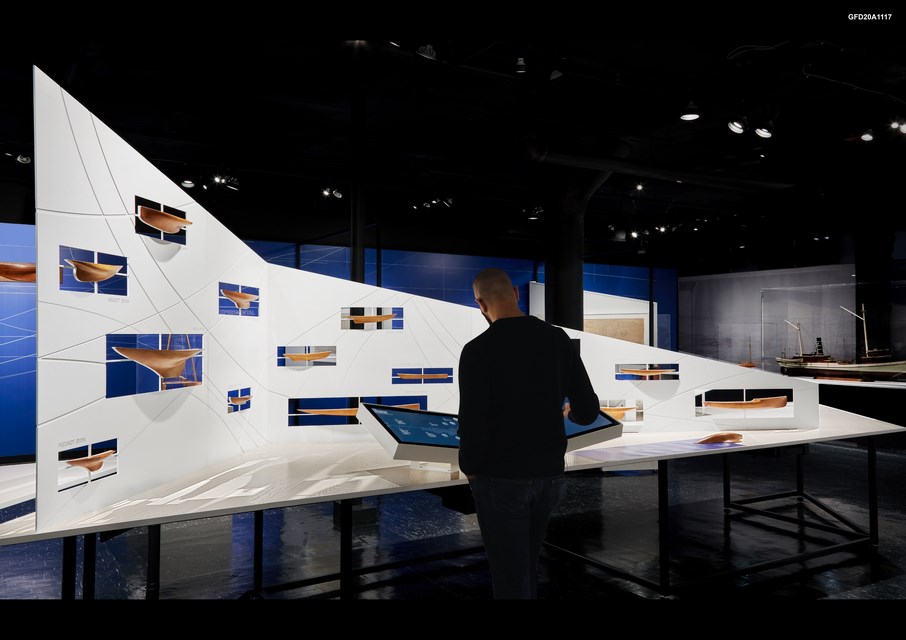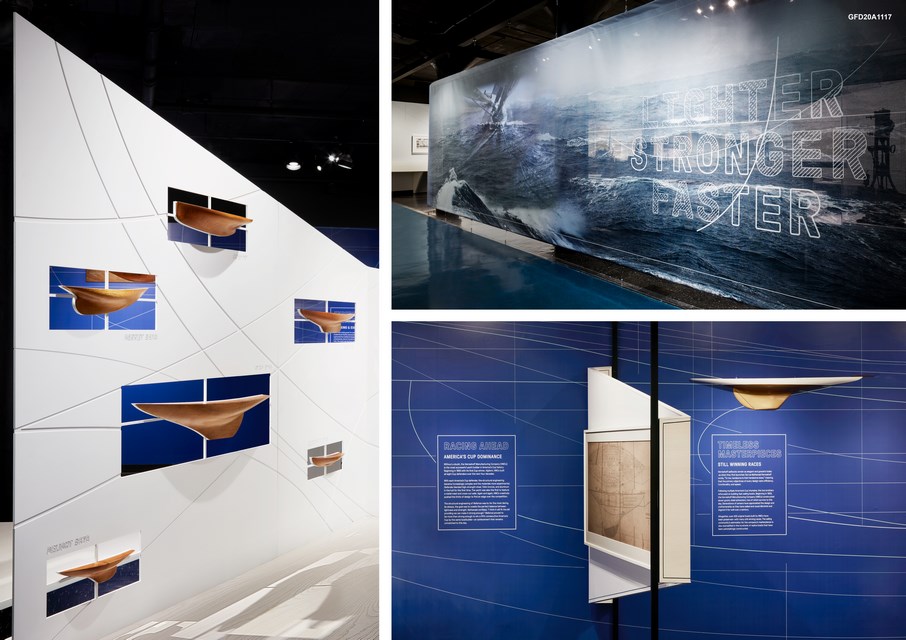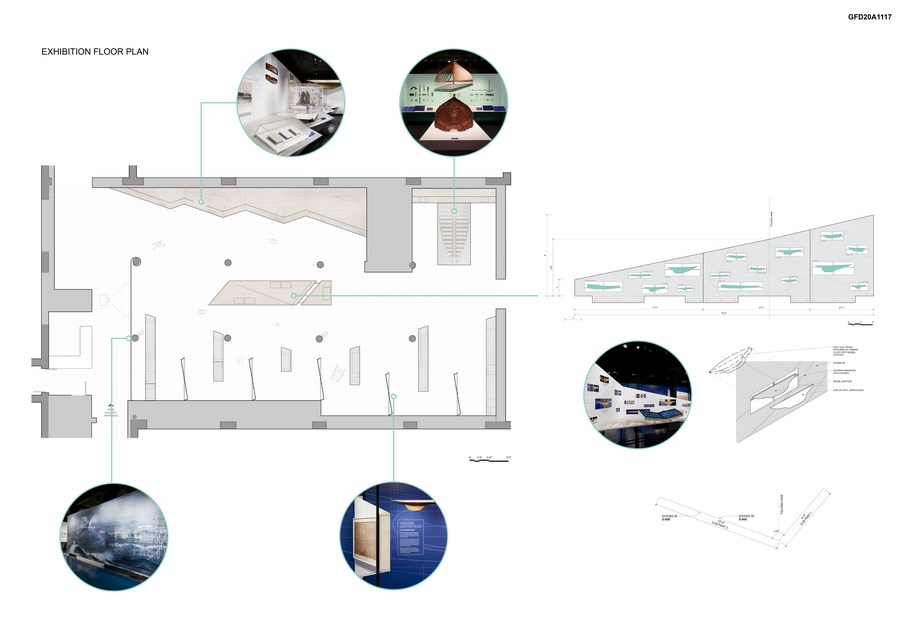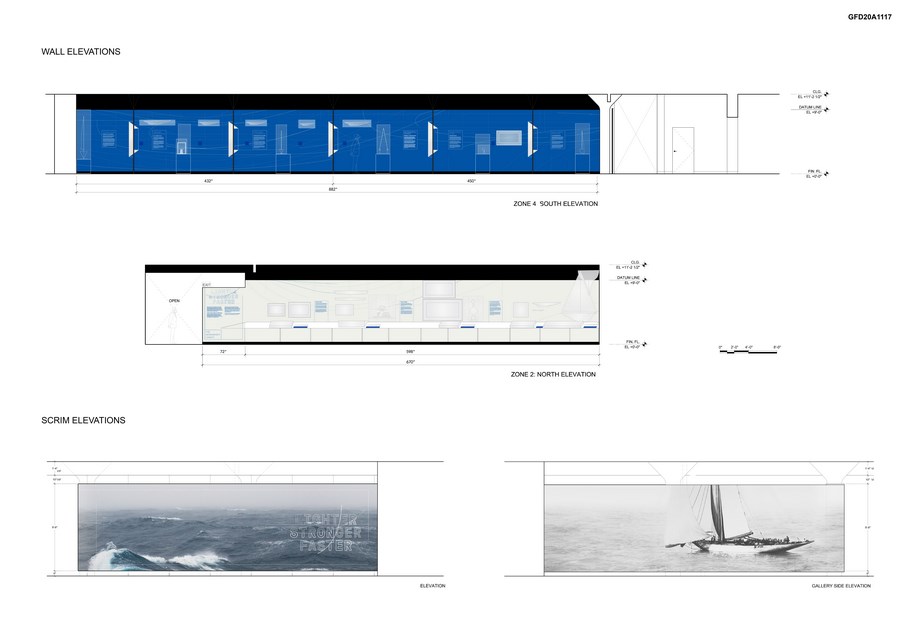“Lighter, Stronger, Faster: The Herreshoff Legacy” celebrates the spirit of innovation by examining the impact on marine design and engineering by Nathanael Greene Herreshoff and the Herreshoff Manufacturing Company. N.G. Herreshoff set new standards in design and manufacturing, realizing remarkable success and influence over a 75-year career. His legendary engineering innovations and manufacturing efficiency led to the production of six America’s Cup winners and hundreds of other highly regarded vessels, including the introduction of modern catamarans, the first torpedo boats for the U.S. Navy, and the first steam-powered fishing vessels in the U.S.
2nd Award- Global Future Design Awards 2020
Firm | Studio Joseph
Architect/Designer | Wendy Evans Joseph
Category | Pop-Ups & Temporary
Team | Wendy Evans Joseph, Monica Coghlan, Derek Lee, Elnaz Rafati
Country | United States
Photographer/Copyright | ©Studio Joseph
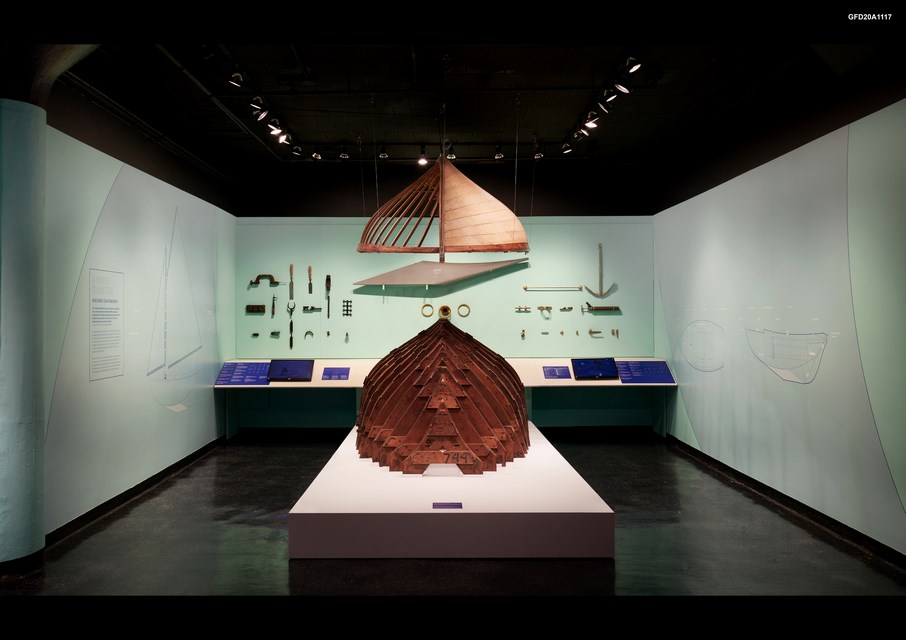
The exhibition is divided into four distinct but related sections each telling the story of different aspects of boat design and construction processes. As told through original sketches, half hulls, mechanical drawings, scale presentation models, authentic maritime hardware and machinery, the design poses relationships between part and whole, engineering and sculptural form, all with a vivid sense of materiality. Relating to the theme of movement, the installation takes clues from maritime form and color but without mimicry or nostalgia using graphics and boldly reductive mounts to create an immersive environment. The curatorial narrative called for an abundance of text and illustration allowing for scholarly, in-depth study, yet the visitor experience is one of engagement that is awe-inspiring but never overwhelming. The use of an innovative media interface grants easy access to the enormous Herreshoff archive. One can search for information while interacting face-to-face with numerous boat models displayed along with their technical drawings at a large central table. The use of a rigid aluminum armature with cutout windows for half hulls allows the visitor to see forty of Herreshoff’s sailing vessels at the same scale in relation to each other.
The gallery, riddled with columns, pipes and mechanical equipment posed numerous challenges. Although the black ceiling softens the effect of this infrastructure, special care was taken to avoid attachment to the building shell and areas that are overly encumbered.
Employing a reduced palette of materials, the show’s dynamic, angled forms allude to the feeling of consecutive boat prows lined up in the harbor — plywood, known for its lightness and strength, mirrors Herreshoff’s goals. Its white-washed surface provides texture and authenticity to the displays. With their contrast to the existing polished black floor and dark ceiling, fabricated structural elements’ supporting artifacts float in space as if caught between the night sky and luminescent dark sea. While working metaphorically in many ways, the sparseness of the architectural language supports the content giving the seaworthy shapes of hulls their visual space. The bow of a sailing boat cruising full-speed projects onto a 25-foot long printed scrim of the open seas, taking even the visitor who has no sailing experience into a magical world of engineering and discovery as they enter the gallery.
The show will be on display for at least two years, but despite the modest budget (about $100K) the design team used durable finishes and moving projection to enliven the space.


